Abstract
An instrument that assists subjects in attaining deep muscle relaxation by means of analog information feedback is described. Subjects hear a tone with a pitch proportional to the electromyographic activity in a given muscle group. Results showed that subjects receiving this type of analog feedback reached deeper levels of muscle relaxation than those receiving either no feedback or irrelevant feedback. The basic method employed—electronic detection, immediate information feedback, and systematic shaping of responses—would seem potentially applicable to a variety of physiological events, and might be useful both in behavior therapy and in certain psychosomatic disorders.
Full text
PDF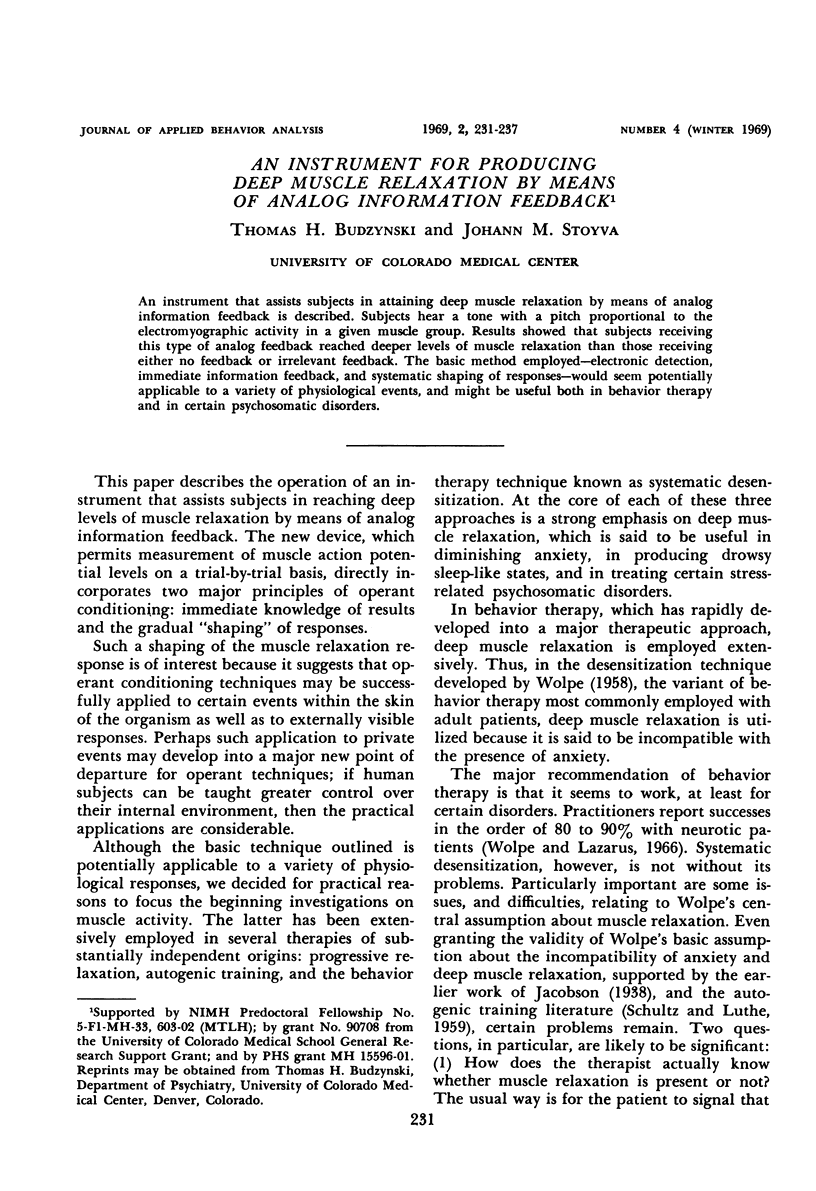
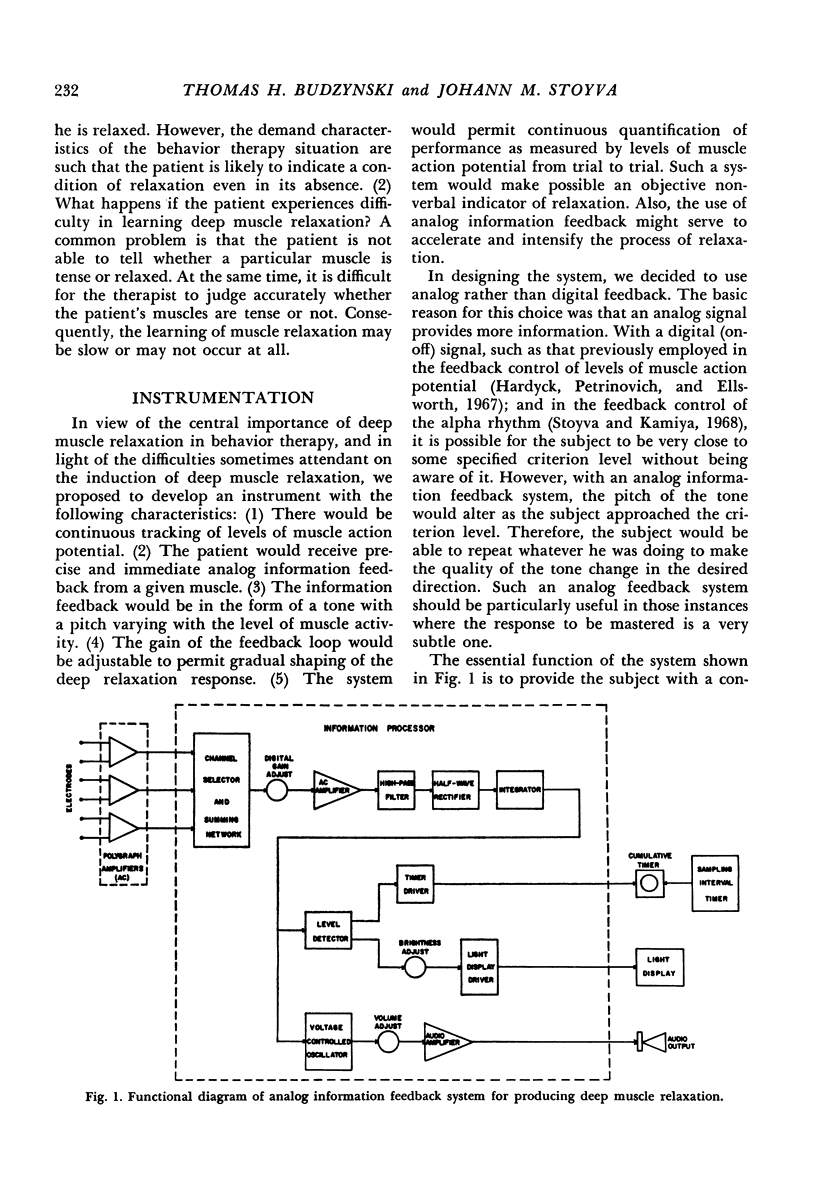
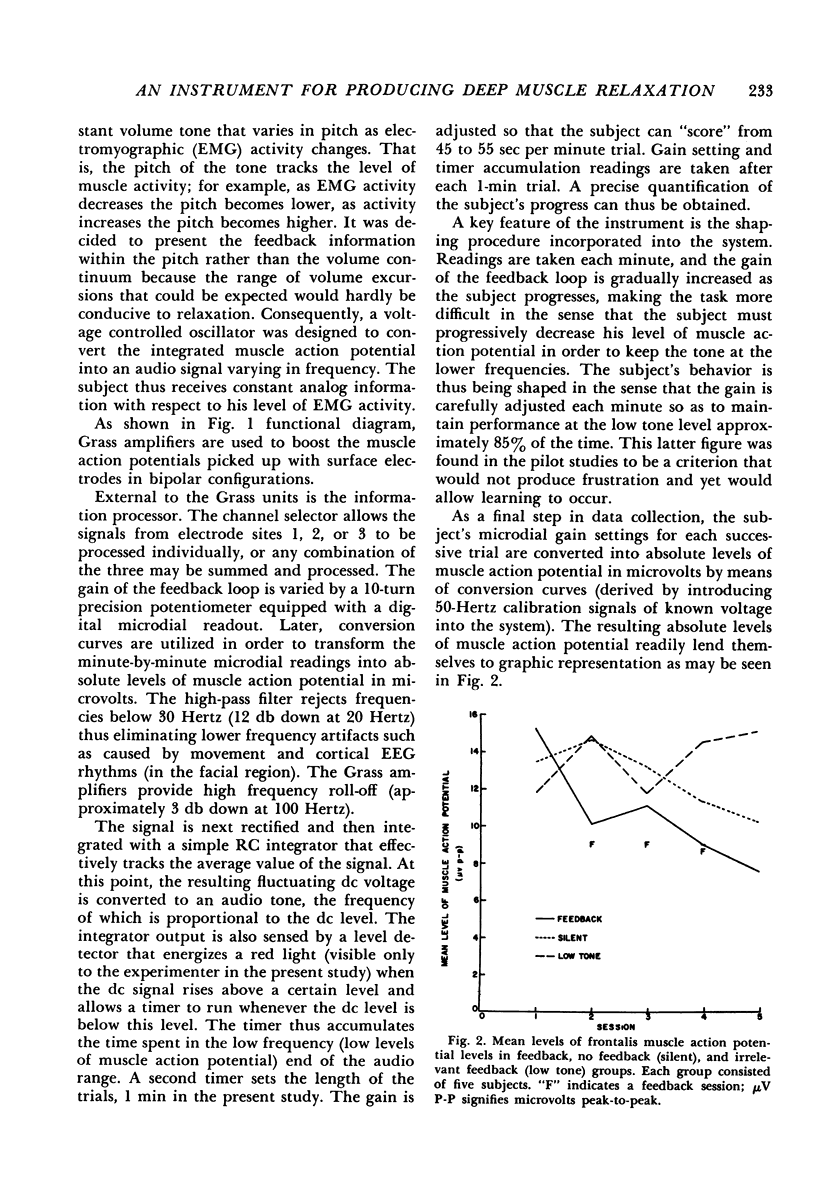
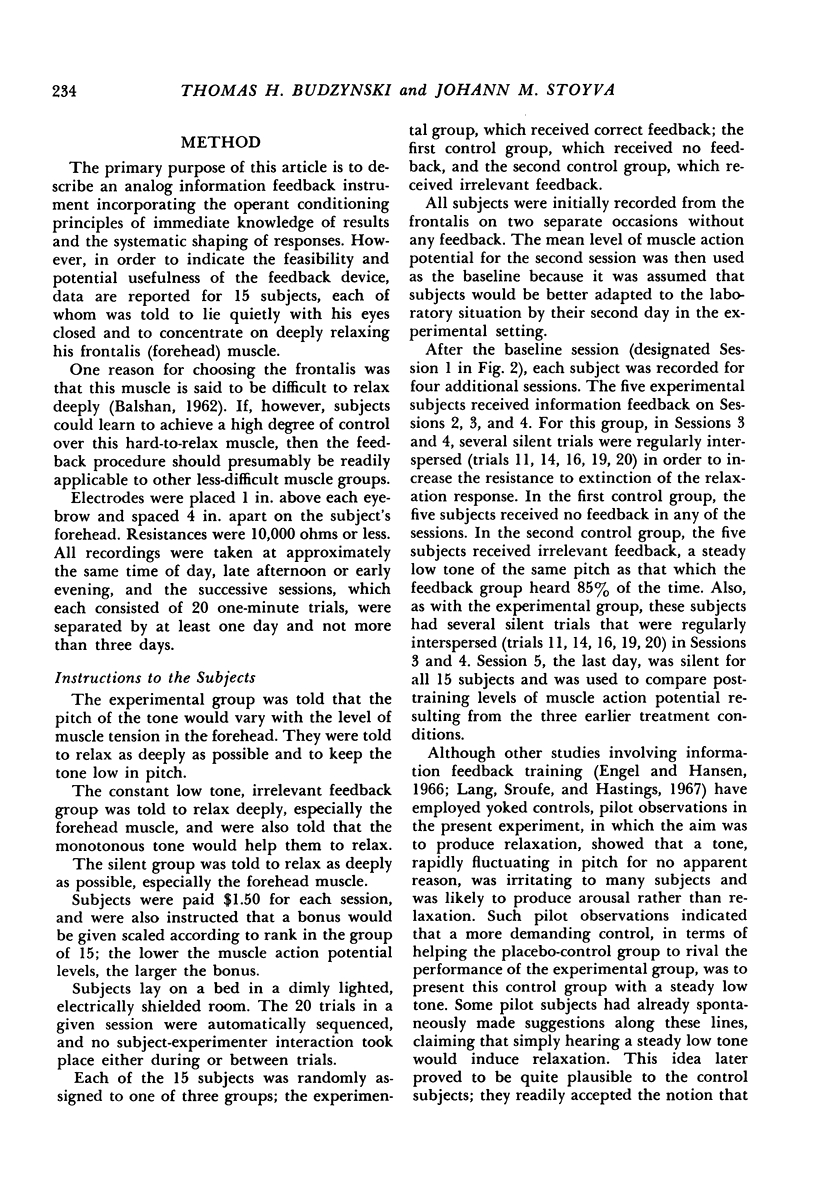
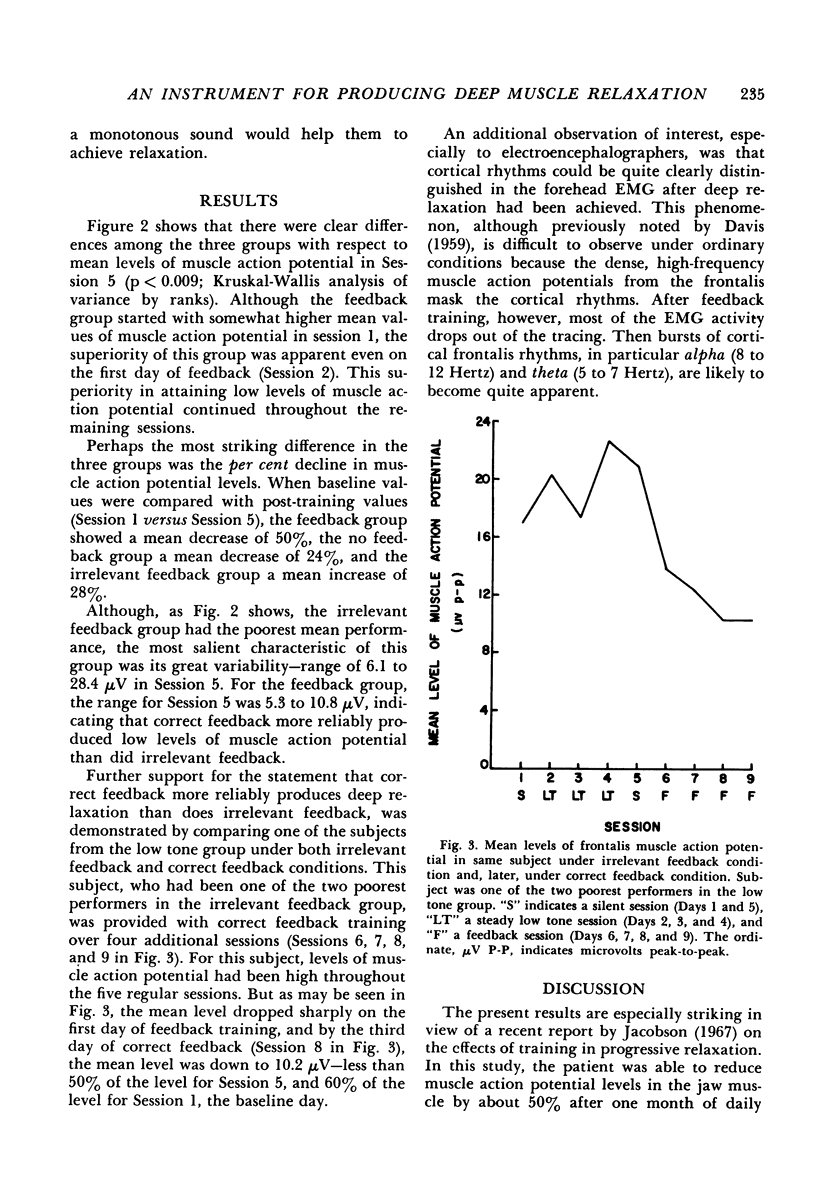
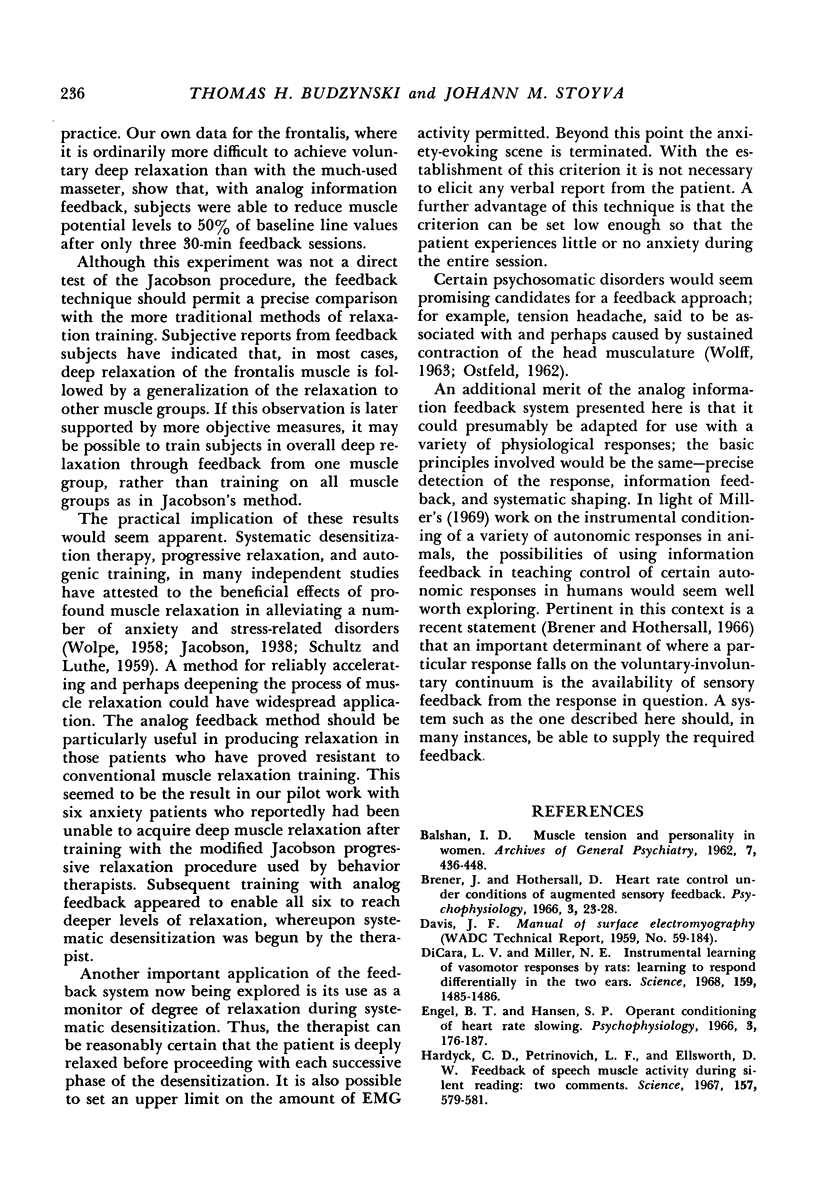

Selected References
These references are in PubMed. This may not be the complete list of references from this article.
- BALSHAN I. D. Muscle tension and personality in women. Arch Gen Psychiatry. 1962 Dec;7:436–448. doi: 10.1001/archpsyc.1962.01720060048005. [DOI] [PubMed] [Google Scholar]
- Brener J., Hothersall D. Heart rate control under conditions of augmented sensory feedback. Psychophysiology. 1966 Jul;3(1):23–28. doi: 10.1111/j.1469-8986.1966.tb02675.x. [DOI] [PubMed] [Google Scholar]
- DiCara L. V., Miller N. E. Instrumental learning of vasomotor responses by rats: learning to respond differentially in the two ears. Science. 1968 Mar 29;159(3822):1485–1486. doi: 10.1126/science.159.3822.1485. [DOI] [PubMed] [Google Scholar]
- Engel B. T., Hansen S. P. Operant conditioning of heart rate slowing. Psychophysiology. 1966 Oct;3(2):176–187. doi: 10.1111/j.1469-8986.1966.tb02693.x. [DOI] [PubMed] [Google Scholar]
- Hardyck C. D., Petrinovich L. F., Ellsworth D. W. Feedback of speech muscle activity during silent reading. Science. 1967 Aug 4;157(3788):581–581. [PubMed] [Google Scholar]
- Miller N. E. Learning of visceral and glandular responses. Science. 1969 Jan 31;163(3866):434–445. doi: 10.1126/science.163.3866.434. [DOI] [PubMed] [Google Scholar]
- Stoyva J., Kamiya J. Electrophysiological studies of dreaming as the prototype of a new strategy in the study of consciousness. Psychol Rev. 1968 May;75(3):192–205. doi: 10.1037/h0025669. [DOI] [PubMed] [Google Scholar]


